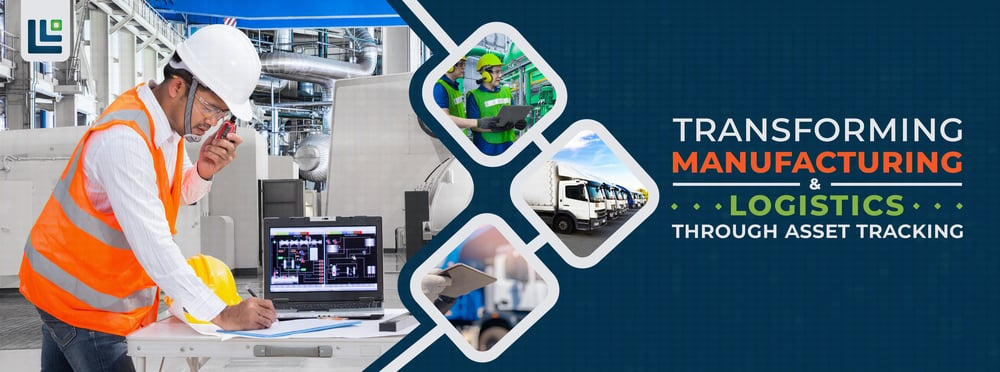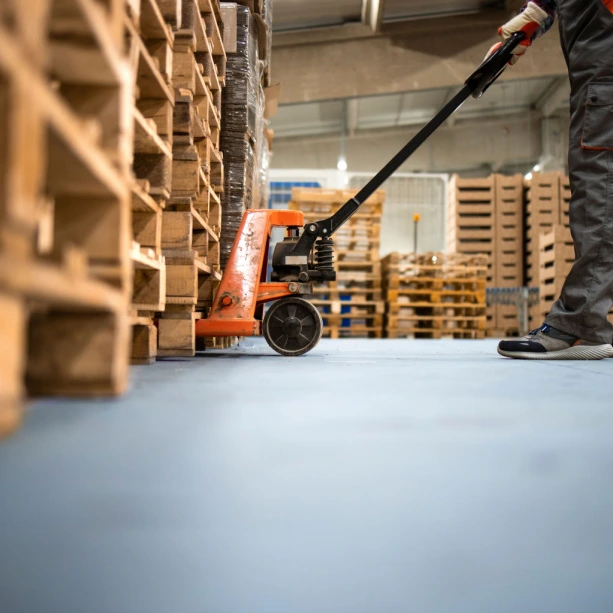Millions of pallets are shipped around the country each year. Sometimes the pallets are returned, and sometimes they’re not. Sometimes the pallets that are returned are returned damaged and unusable. The cost of buying new pallets adds up quickly, affecting your bottom line. Returnable pallet tracking is the best way to ensure your pallets are always returned and returned intact.
What is Returnable Container Management?
While people choose to track their returnable containers for different reasons, it looks the same for every company. It’s easy to understand pallet tracking; it’s tracking your pallets while they’re in transit, even if you aren’t with them. In the past, this tracking has been done manually. At first, it was done with pen and paper. Employees would sign out the numbered pallets when they left and sign them in upon return. When this proved to be laborious, many logistics companies invested in barcode scanners. While this automated the process to a certain extent, it was still heavily dependent on human labor, leaving room for forgetfulness. Nowadays, logistics tracking systems have been developed to automate tracking completely.
Using technology for pallet tracking is easier than you might expect! It’s as simple as attaching a GPS asset tracking device to the pallet, connecting the device to the UI, and watching it move around. If a pallet leaves the warehouse, no one has to do anything. If someone goes looking for that pallet, they just have to look at the UI to see where on a map the pallet is.
Join the AirFinder Difference!
- Innovation. Organizations can be freed up to innovate and bring more impactful products and services to market.
- Profitability. Increased profitability provides new opportunities to innovate and improve valuation.
- Digital Transformation. Discover competitive advantages, new revenue opportunities, improved customer relationships, and increased efficiency.
Why is GPS Pallet Tracking Necessary?
As mentioned above, companies have different reasons for using a GPS asset tracker. Some choose to use one to track their trailer, and others use one to reduce human error. Let’s break down a couple of popular use cases among logistics companies.
Improve Tracking Accuracy
Manually tracking your pallets isn’t an accurate way to track your pallets. There’s a variety of reasons why not. For one, there’s a chance for forgetfulness. The pallet user may not remember to sign the pallet they’re using in and out like they’re supposed to. If they aren’t signed out, someone else may see that it’s available for usage and search the warehouse for something that isn’t there. On the other hand, if it’s not signed in, management may think they don’t have enough pallets to properly function and order more when it’s unnecessary. Human error can also look like marking the wrong pallet as checked in or out, leading to the same problems just described.
Improve Lost Pallet Recovery
Missing pallets cause a lot of frustration for managers. If pallets aren’t returned to the warehouse, the next shipment won’t have enough pallets. Even more, lost pallets cost money to replace. As a company, you want to invest in your company to make it better; you don’t want to spend money replacing what you already had. A trailer tracking device reduces the number of lost pallets. If a pallet isn’t returned, it’s not lost forever; you just have to look up its location on the UI and see where it was left so you can get it back.
Improve Sensitive Asset Quality
A niche industry that benefits from pallet tracking is the cold chain. Not only can tracking help you reduce the loss of temperature-sensitive foods, but it can also help you prevent the spoilage and waste of those foods. Let’s use lettuce as an example. Lettuce must be kept around 34 degrees, give or take, depending on the specific type of lettuce. If the refrigerator in the refer trailer fails during transportation, the lettuce will spoil pretty quickly. Suppose you have a GPS tracker for your trailer with sensors embedded attached to your returnable pallet. In that case, you can be alerted to the temperature change so you can address the situation before the lettuce expires.
Improve Pallet Life
Now returnable pallet tracking doesn’t necessarily prevent damage on its own. It helps hold employees accountable for damage, thus encouraging employees to take care of the pallets under their watch. When a pallet is found damaged in the warehouse, managers can find out who the previous user was and why the pallet was damaged. With sensors on the tags, it’s possible to determine when the damage occurred. It’s not always the user's fault; there are times when an outside source causes damage, like a pothole. Managers can understand why the damage occurs and takes steps to reduce the damage in the future, leading to fewer replacement costs.
Improve Savings
Most companies are probably already using returnable pallets, so we can talk about how tracking those pallets saves even more money. Most of the use cases we’ve discussed lead to a cost reduction. With less loss occurring during transit, you’re spending less money on replacements. With a better understanding of where damage to the pallets is coming from, you can make efforts to prevent damage, ultimately reducing the amount of money you’re spending replacing those pallets. 
Boost Your Bottom Line with AirFinder
AirFinder Everywhere is an asset tracking system that helps logistics companies properly track their returnable pallets and containers. AirFinder gives users real-time location information on their most valuable assets. It’s helped many companies reduce the amount of pallets they lose and prevent damage of those pallets. If you want to learn more about AirFinder and how tracking returnable pallets can benefit your business, book a demo with us!




